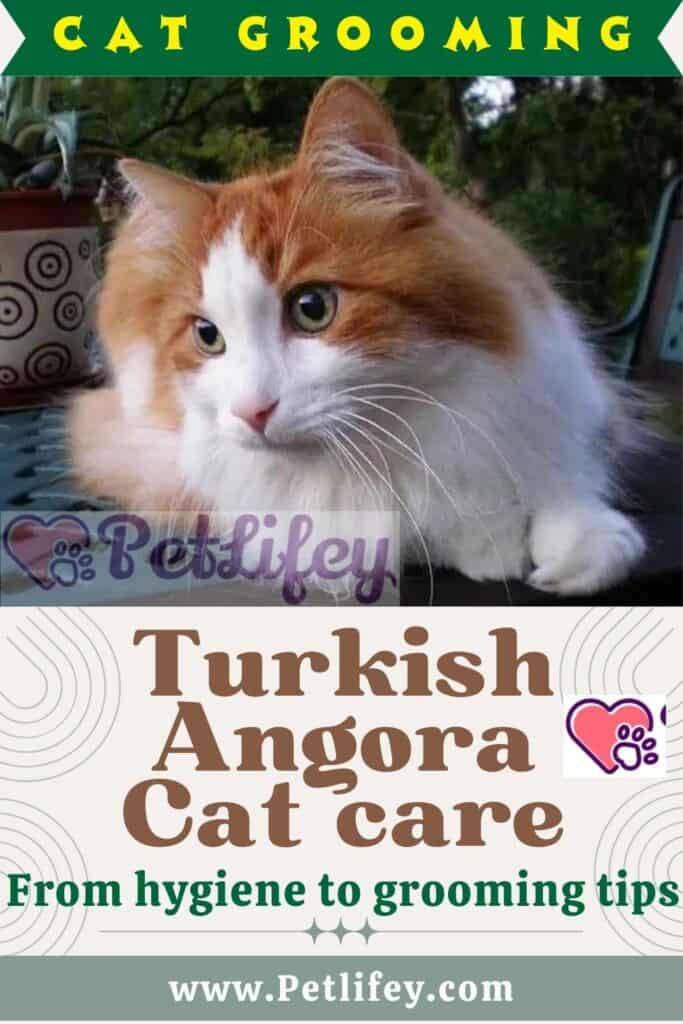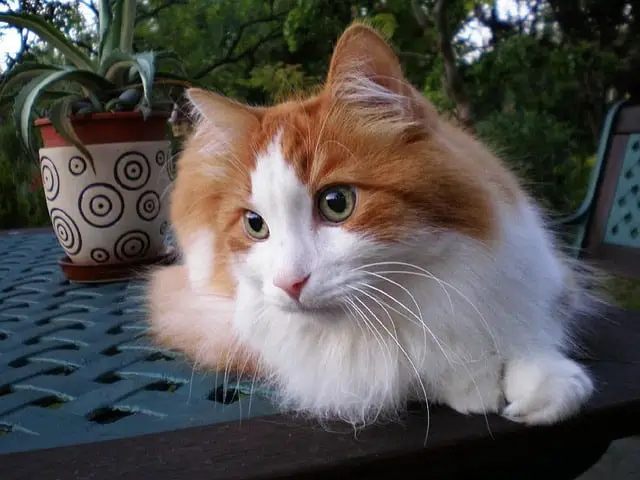Turkish Angora Care: from grooming to hygiene. All beauty tips for the well-being of this cat breed.

Caring for an animal goes far beyond caring for food and its physiological needs.
In particular, if we talk about taking care of a cat, it means making a commitment to love it despite its sometimes elusive behaviour.
Let’s see what the experts advise on how to take care of the Turkish Angora regarding the hair and its hygiene.
Hair care of the Turkish Angora
The Turkish Angora is a medium to long haired cat and while this trait may worry beginners, it’s not all that complicated.
The Turkish Angora is a cat that fascinates both enthusiasts and beginners thanks to its long hair, which is characterized by its silky texture.
It is a coat that has no undercoat, it falls directly on the cat’s body and this makes it easy to manage.
The Turkish Angora as you can guess from the name, is native to Turkey and the climate of that area lets you understand why this cat, in winter shows a dense and thick coat, with even greater consistency on the neck.
While in summer the fur is much shorter, but above all light and silky.
This means that this breed has perfectly adapted to the hot summers and cold winters of the mountainous and Caucasian territories, typical of the area.
As for the colors, although less important for the purposes of hair care, particular attention must be paid to the white Turkish Angora.
This white-colored cat breed was recognized as the only color for the Turkish Angora until the 1990s and still today, in Turkey, the rule is in force that the Turkish Angora must have white fur.
Over time, colored varieties were also introduced at the FIFe (International Feline Federation).
This is why today the Turkish Angora cat is recognized by all associations also in the black and red colors and in the diluted and silver variants of these colors and present the motifs such as Tabby.
Based on what has been said before, on the medium-long hair of the Turkish Angora cat, regarding grooming, in such cases, it is necessary to brush the cat every day.
Where possible even several times a day, unlike the 2 to 3 times a week of any other long-haired cat.
To provide brushing, experts recommend a suitable brush, a useful accessory that is suitable for the particular coat of this breed and that makes it clean and shiny.
There are different types of brushes suitable for long-haired cats. Regarding the medium-long hair of the Turkish Angora, the following accessories are needed :
- Bristle brush: Equipped with metal bristles with rounded tips to avoid scratching the skin like traditional brushes. Specifically indicated for animals with long hair.
- Cat glove : A five-finger design brush can quickly and gently remove hair and reach hard spots. At the same time, it can fully massage the pet’s skin and promote blood circulation;
- A wide-toothed comb: Equipped with chromed metal teeth, very delicate on the cat’s skin, so as not to scratch it;
- A slanator: Removes dead hair, tangles and knots in an appropriate way, without hurting the cat.
Hygiene and cleanliness of the Turkish Angora

As we could read in the previous paragraph, the Turkish Angora needs particular attention for its long coat. Let’s now see what his body hygiene consists of.
It is known to everyone, even those who are not lucky enough to share their life with a cat, that this animal is extremely clean, almost obsessed with the hygiene of its own body.
They even spend most of their time licking each other, cleaning all or almost all parts of the body.
However, there are some areas that, however athletic and elastic, they just can’t manage.
In these cases it is advisable that you intervene to be able to make sure that your ears, teeth, nails are clean. What can you do to help your Turkish Angora complete its cleaning?
Here are the tips for its hygiene:
- Clean the ears, to be able to remove the earwax that accumulates and can cause problems. You can use gauze or a simple napkin. Remember to do it gently;
- Brush the cat’s teeth, every two or three weeks, using a special toothbrush sold in specialized stores;
- Cut the nails, with the use of specific scissors. If you are unable to do this at home on your own, it is best to consult a grooming professional.
To respect the bath it will need to get used since young.
This is the only way to keep him from getting annoyed when it’s bath time. One a month, unless he gets heavily soiled, his white coat might be enough.
It is essential to use specific products for cleaning the cat. Avoiding products intended for human hygiene care that could damage the cat’s skin.
And if you can avoid the bathroom, as it is not an intense dirt, you can use hygienic wipes to clean the hair.






